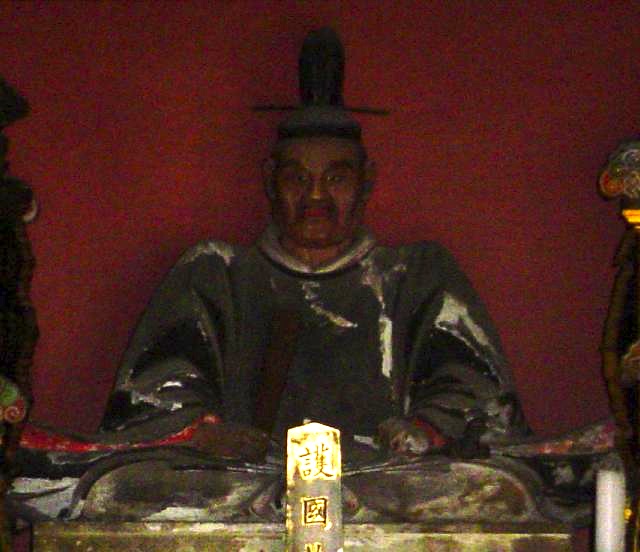“There may be a hundred stances and sword positions, but you win with just one.”
A Hereditary Book on the Art of War (1632)
Yagyū Munenori est un escrimeur japonais, fondateur de la branche d'Edo du Yagyū Shinkage-ryū, qu'il a appris de son père Yagyū « Sekishusai » Muneyoshi. C'est l'un des deux styles officiels d'escrime patronnés par le shogunat Tokugawa . Munenori commence sa carrière dans l'administration Tokugawa comme hatamoto, vassal direct de la maison Tokugawa, et plus tard voit son revenu élevé à 10 000 koku, ce qui en fait un fudai daimyo secondaire , avec des propriétés foncières autour de son village ancestral de Yagyū-zato. Il reçoit de la Cour Impériale le titre honorifique de Tajima no Kami . Wikipedia

“There may be a hundred stances and sword positions, but you win with just one.”
A Hereditary Book on the Art of War (1632)
A Hereditary Book on the Art of War (1632)
A Hereditary Book on the Art of War (1632)
Contexte: A stroke of the sword that does not hit its target is the sword stroke of death; you reach over it to strike the winning blow. Your adversary's initiative having missed its mark, you turn the tables around and get the jump on your adversary.
As quoted in The Japanese Art of War (1991) by Thomas Cleary
“Conquering evil, not the opponent, is the essence of swordsmanship.”
As quoted in Behold the Second Horseman (2005), by Joseph Lumpkin, p. 44.
As quoted in Soul of the Samurai (2005) by Thomas Cleary, p. 28
Variant translation: If you have attained mastery of swordlessness, you will never be without a sword.
A Hereditary Book on the Art of War (1632)
“See first with your mind, then with your eyes, and finally with your body.”
As quoted in Living the Martial Way : A Manual for the Way a Modern Warrior Should Think (1992) by Forrest E. Morgan, p. 88.
As quoted in Behold the Second Horseman (2005), by Joseph Lumpkin, p. 53.